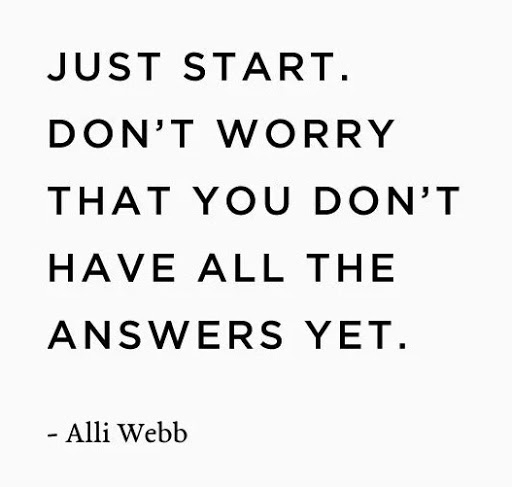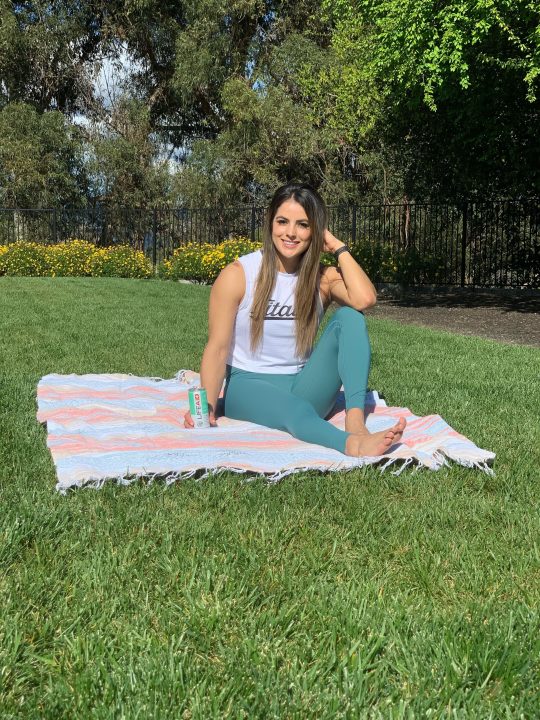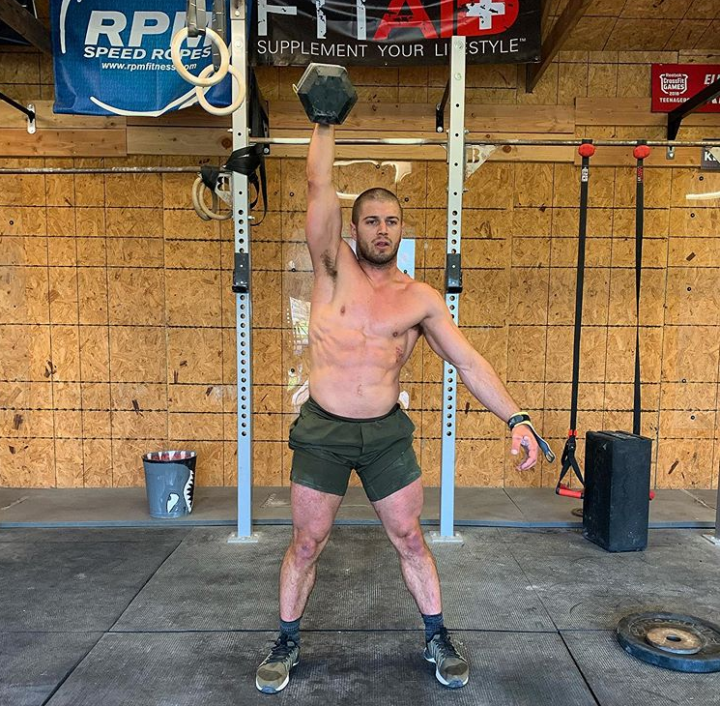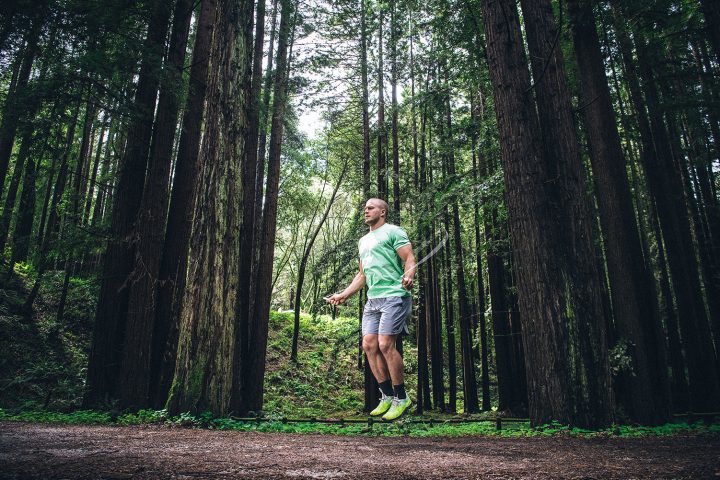


![]()
Jacob Heppner on the Make Wods Great Again Podcast
CrossFit Games and Team FITAID athlete Jacob Heppner joined the Make Pods Great Again podcast back in March to discuss his retirement from competitive CrossFit, his new training barn, his work with teen athletes, new business ventures, and some hints to his new sporting pursuits. Spoiler alert: he’s boxing Josh Bridges in September.
![]()
Physical Therapist Advice for Athletes
Taking care of your body means you can tackle your next adventure sooner. Abigail Stanislaw, a physical therapist in Santa Fe who specializes in sports rehabilitation, answered our most burning rehab questions.

“What would you do if you weren’t afraid?”
—Sheryl Sandberg
![]()
FITAID Strawberry Lemonade is Here!
We've made athletic recovery simple. Now we've made it even more delicious for summer. As our first flavor extension, FITAID Strawberry Lemonade checks off all the boxes for a refreshing finish to a hard workout. Stacked with anti-inflammatory goodness and great taste, this is my new favorite in our roster.
![]()
7 Habits of Highly Successful People
One of the most inspiring and impactful books ever written, The 7 Habits of Highly Effective People has captivated readers for nearly three decades. It has transformed the lives of presidents and CEOs, educators and parents--millions of people of all ages and occupations. Now, this 30th anniversary edition of the timeless classic commemorates the wisdom of the 7 Habits with modern additions from Sean Covey.

HindeSight | No. 65
Written by travel blogger Tiffany Ammerman
Athletes around the world have become all-too familiar with the struggles of trying to maintain a healthy lifestyle and exercise regimen while gyms have been temporarily closed worldwide during the COVID-19 pandemic. Sharing our quarantine experiences and struggles with our fitness friends has become a major way for us to connect and stay motivated in a time of social distancing.
But what has quarantine been like for professional athletes?
We interviewed four FITAID athletes—Kelsey Kiel, Jacob Heppner, Neal Maddox and Jackie Perez—to get their take on how they’ve been not only staying fit but also what key learnings they may be taking away from their time in quarantine so far. Here's what they had to say!
QUESTION 1
FITAID: Isolation coupled with a massive change in our normal day-to-day life can be tough for everyone. What obstacles have you experienced and overcome during quarantine?
Kelsey Kiel: I think one of the biggest things people (including myself) weren't used to when we started this whole quarantine is the "being alone with yourself" thing. I always thought I was independent (I still think that), but being separated from normal life and interactions, you really have to be okay with sitting with yourself (all the thoughts and feelings that come with that). It was a tough thing for me at first, but I've really embraced FEELING and THINKING and BEING. Which is a bit abstract, but I think it's helped me grow.
Jackie Perez: Quarantine has forced me to really take a look at what I rely on for happiness. Total isolation has shown me that I rely on others and events to make me happy or motivate me. I have overcome this by trying to focus on the things that bring joy to me. The things that if they were taken away, they wouldn't take my joy. I've started doing things I would never stop and take the time to do like read and go on walks or journal. Things that don't require much but truly make me happy.

QUESTION 2
FITAID: As many of our local CrossFit boxes have been closed, what are some ways that you've been keeping fit during quarantine? What is the most unique thing you've done so far for fitness?
Jackie Perez: I created a Running Club because I found myself very unmotivated to workout. It was a huge success and had over 500 people sign up. I thrive on community so I created one where we all pushed each other and kept each other accountable. Nothing replaces the community vibe of being at the gym, but we must adapt to the current situation instead of letting it control us.
Neal Maddox: I tend to go for bike rides a lot. I put together a home gym so I am able to train still.

QUESTION 3
FITAID: Staying positive and tuning in to our emotions have been very important lately. How have you been staying present, positive and connected?
Jacob Heppner: For those of you that know me you know I'm already a super positive and connected person! One thing I recently did during the quarantine period was to start Fitness Related Awesome News (FRAN) which shares positive and uplifting news from around the globe in the fitness space!
Kelsey Kiel: I've been doing a lot of self work and reading and writing. It's also been helpful to have people around me (not necessarily physically, haha) who have been there—FaceTiming, phone calling, and connecting that way. My dog also helps me stay positive because he's so dang cute.

QUESTION 4
FITAID: Describe how you've been focusing on nutritional wellness during this time. What have been some of your favorite healthy dishes you've made during quarantine?
Kelsey Kiel: I track my macros regularly, and I recognized after a few weeks that nutrition and food is something I can control, so it actually helped me feel a sense of normalcy to continue to count and track my macros and eat the normal, healthy and tasty things I normally would.
Jacob Heppner: I've actually spent a lot of time focusing on my nutritional wellness and realized that so many others need that help and need accountability! So I recently started "Functional Eating" which is a nutrition company with a 1-on-1 coach, the same coaches I use for my diet and nutrition for competing at the Games. Our main focus is giving every person that accountability and relationship instead of just a plain ol' diet template that doesn't keep you accountable!

QUESTION 5
FITAID: What advice do you have for other athletes during quarantine? What have you personally taken away from this experience?
Neal Maddox: Advice I could give is this: get off social media and pick up a book. I have been basically going back to school and gathering as much knowledge as possible. The reason is because I want to come out of this pandemic a better person and great coach for my clients.
Jackie Perez: The best advice I can give is to only focus on what you can control. See opportunity in the situation that will help you grow. It's a great time to get back to the fundamentals and make them bullet proof. We won't have this kind of time to rebuild from square one again so focus on the basics and get really good at them so when things go back to normal, we can continue to build.
C O N C L U S I O N
This experience has shown me just how important it is to control our thoughts. This can either be the biggest tragedy we have had to deal with or an opportunity for growth in areas of our lives we have ignored because we were too busy.
As Jackie Perez mentioned in her interview, “Nothing replaces the community vibe of being at the gym, but we must adapt to the current situation instead of letting it control us.”
While it can be easy to lament the temporary closing of your local gym, remember that everyone—even professional athletes—are going through the same experience, and with that knowledge we can move forward together towards a positive and healthy future.
All images are the property of respective athlete and FITAID, all rights reserved.
About the Author:
Georgia native Tiffany Ammerman is the thru-hiker and CrossFitter behind the travel blog The Goodish Traveler. She spends the majority of her time traveling, eating sushi and searching for hiking trails. When she's not blogging, Ammerman can be found training at CrossFit LaGrange and teaching art to kids.
> > > Stay well.
By Michelle Kennedy Hogan at LifeHack.org
Let's just jump right in!
... Believe it or not, the simple act of jumping rope can do more for you overall than the same time spent jogging. Plus, jumping rope is also easy to do anywhere. A jump rope slipped in your backpack or bag can be brought along on a trip, to work, school or at home ...
Here are a few benefits of jumping rope that you might not know about:
1. Improves Coordination
Jumping rope actually improves your coordination by making you focus on your feet. Whether or not you’re paying attention to them, your brain is aware of what your feet are doing. This practice, over and over again, makes you “lighter” on your feet. Training for one of those warrior-style obstacle course races? Jumping rope can help. According to expertboxing.com's Boxing Training Guide, “the more tricks you do with the jump rope, the more conscious and coordinated you have to be.”
2. Decreases Foot and Ankle Injuries
Jumping rope is beneficial for those active in other sports. Many athletes in basketball, tennis, football and other sports often suffer foot and ankle injuries from running and then stopping quick and turning. This is very common in both tennis and basketball. Jumping rope not only improves your foot coordination but also increases your strength in the muscles surrounding your ankle joint and in your foot, decrease the chance of injury to those areas.
According to the Jump Rope Institute, “jumping rope teaches players to stay on the balls of their feet, as opposed to being flat footed or on their heels. And since you are on your toes the entire time you jump rope, you will find that staying quiet on your toes when playing tennis will become easier and second nature.”
3. Burns Major Calories
Compared to jogging for 30 minutes, jumping rope actually burns more calories. According to Science Daily, “This aerobic exercise can achieve a “burn rate” of up to 1300 calories per hour of vigorous activity, with about 0.1 calories consumed per jump. Ten minutes of jumping rope can roughly be considered the equivalent of running an eight-minute mile.”
4. Completely Portable and Fun
A jump rope can go anywhere with you. Take it to work, take it to school. Warm up before your basketball game or cool down after a bike ride. Learn to do tricks and double dutch with your kids or have competitions between you and your family — how long, how low you can jump, how high, spinning — all kinds of tricks can be done with a jump rope.
5. Improves Bone Density
Dr. Daniel W. Barry, an assistant professor of medicine at the University of Colorado, at Denver, and a researcher who has studied the bones of the elderly and of athletes, says that the best exercise to improve bone density is simply jumping up and down.
“Jumping is great, if your bones are strong enough to begin with,” Dr. Barry says. “You probably don’t need to do a lot either.” (If you have any history of fractures or a family history of osteoporosis, check with a physician before jumping.)
According to The New York Times, “in studies in Japan, having mice jump up and land 40 times during a week increased their bone density significantly after 24 weeks, a gain they maintained by hopping up and down only about 20 or 30 times each week after that.”

6. Improves Cardiovascular Health
According to the American College of Sports Medicine, skipping rope is highly recommended for aerobic conditioning. In order to increase your heart and lung health you must do it three to five times per week for 12 to 20 minutes at a time.
7. Improved Breathing Efficiency
In addition to improved heart health and stamina, jumping rope also improves how efficiently you breathe. This becomes very beneficial when doing other activities because you won’t be as out of breath after running down the court or swimming laps in the pool.
8. Makes You Smarter
Believe it or not, jumping rope can make you smarter. According the Jump Rope Institute, jumping aids in the development of the left and right hemispheres of your brain, which further enhances spacial awareness, improves reading skills, increases memory and makes you more mentally alert. Jumping on the balls of your feet requires your body and mind to make neural muscular adjustments to imbalances created from continuous jumping. As a result jumping improves dynamic balance and coordination, reflexes, bone density and muscular endurance.
9. Improves Your Ability to Stay Calm
Because you are actually working your brain and your body at the same time, boxers in the ring who jump rope actually are more calm overall than those who don’t. The Jump Rope Institute attributes this to the bio-mechanical perspective.
“As one dissects this exercise further and views it from a bio-mechanical perspective, it represents a composite movement combining a circular motion with an angular momentum. The body resembles a projectile subject to all the laws that govern projectile motion while the rope becomes a dynamic flywheel subject to all the laws that govern rotary motion. It is in the synchronous and harmonious coordination of these movements where the secrets and benefits are received.”
Your improved ability to jump rope and be synchronous with your body, mind and the rope, can actually help you be more calm in other situations.
CONCLUSION
Grab a jump rope, get hopping and be amazed by the different ways your body and mind will benefit.
> > > Source: Read the original article by Michelle Kennedy Hogan on LifeHack.org.

BONUS: Want a free jump rope?
Now during the 2019 CrossFit OPEN, you can receive a FREE RPM Sprint Jump Rope + FREE SHIPPING
with every single order of two 24-packs at LIFEAIDBevCo.com. (Offer valid while supplies last, Feb. 21- March 25, 2019.)
For additional information about RPM jump ropes, visit RPMtraining.com
> > > Live well.

